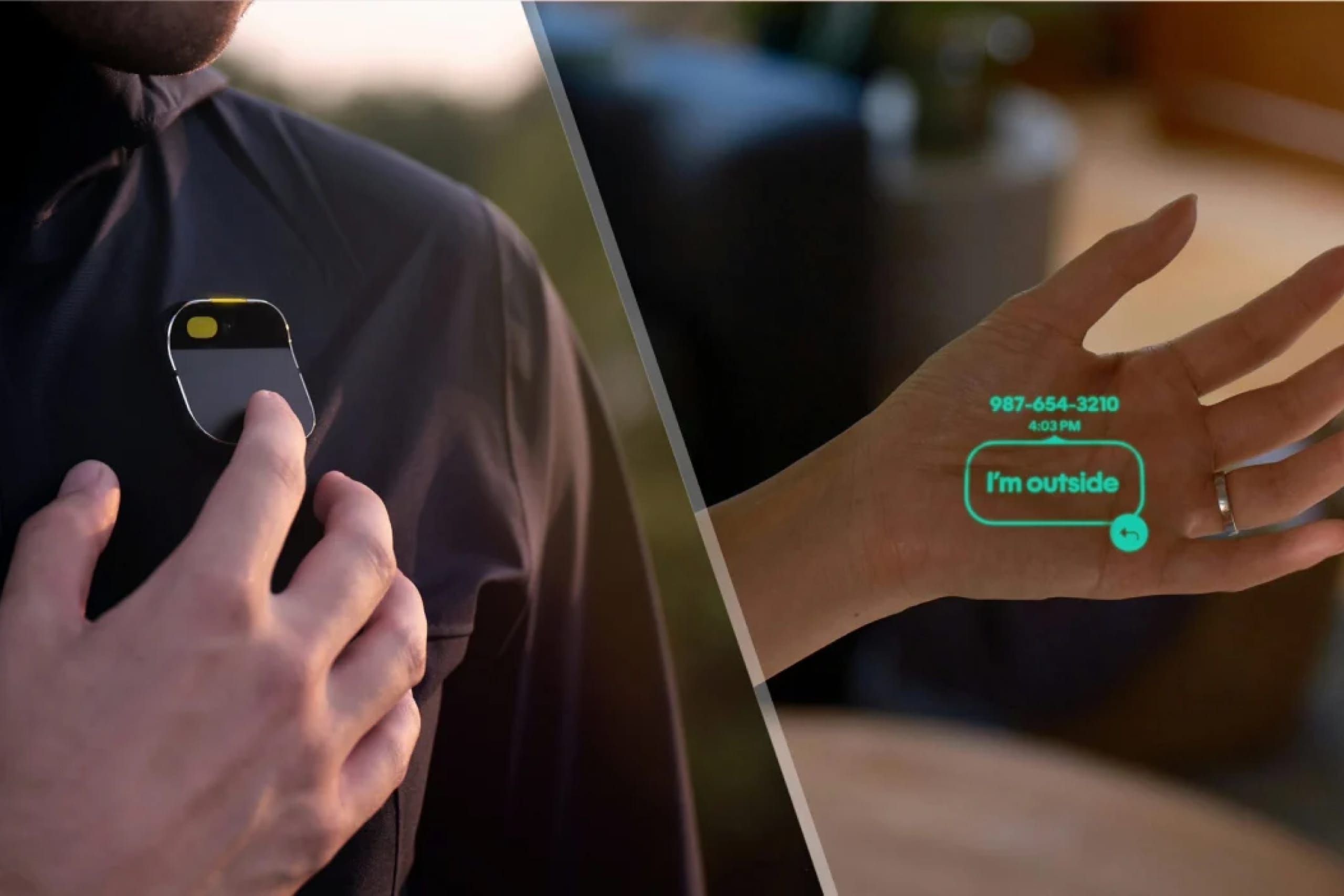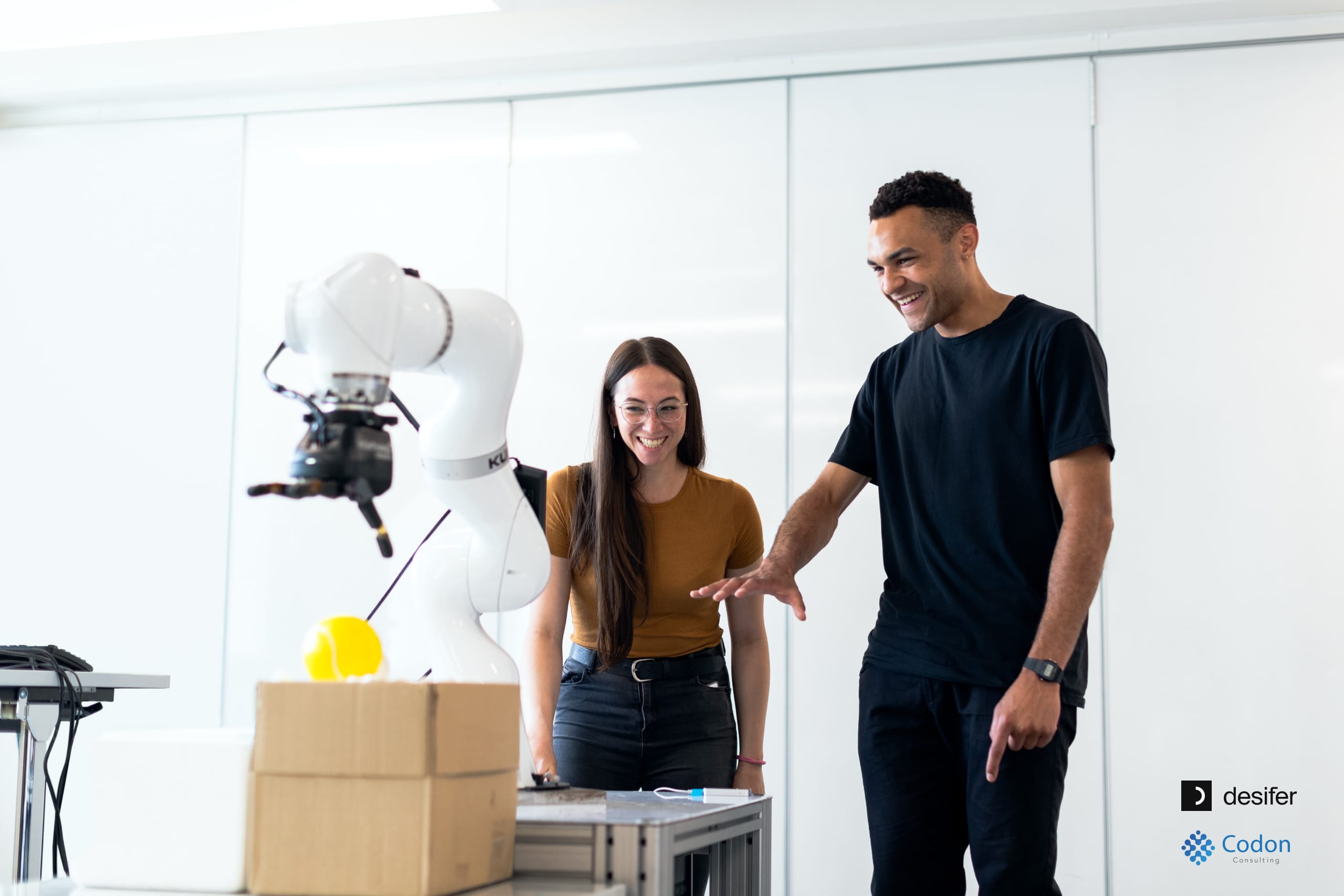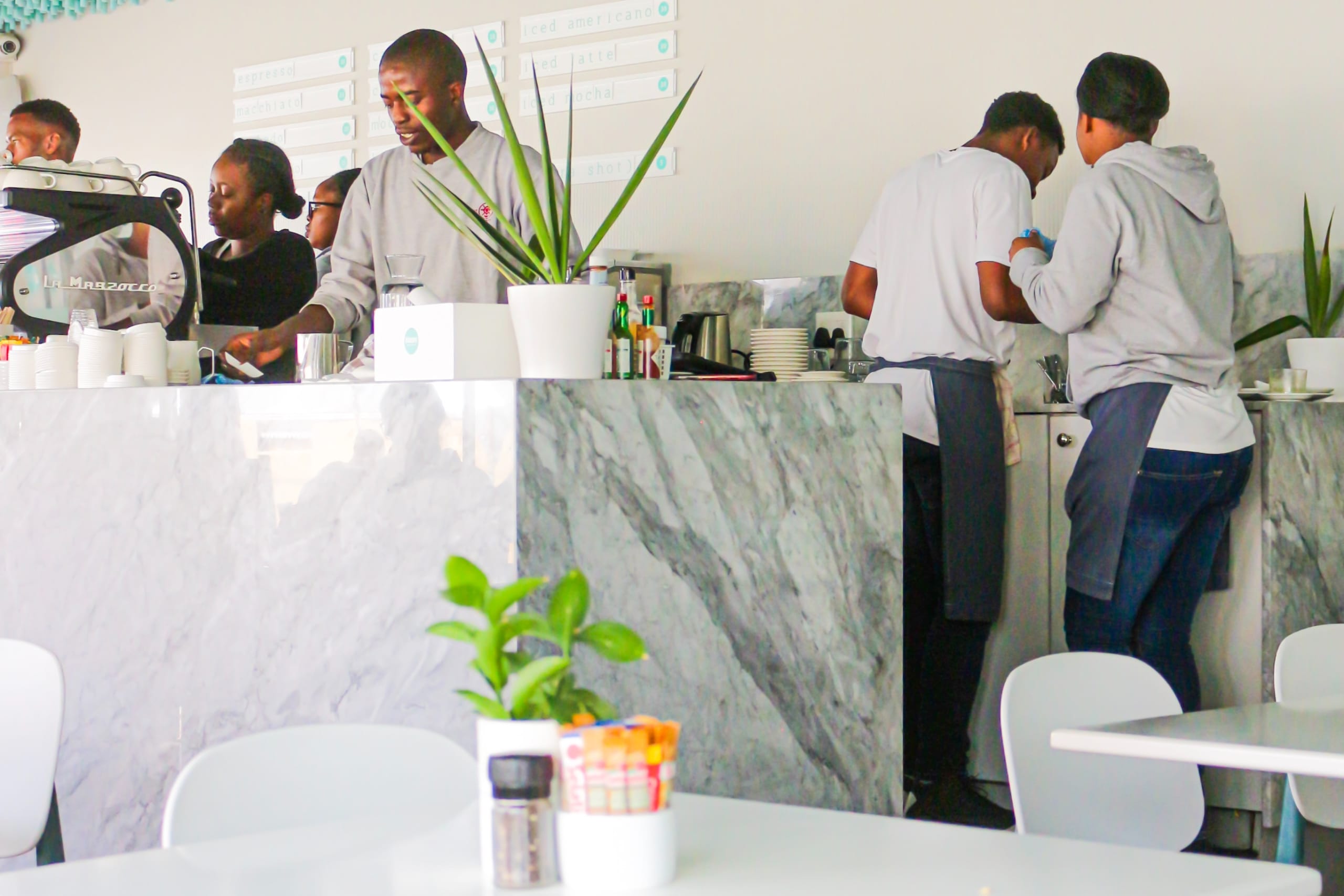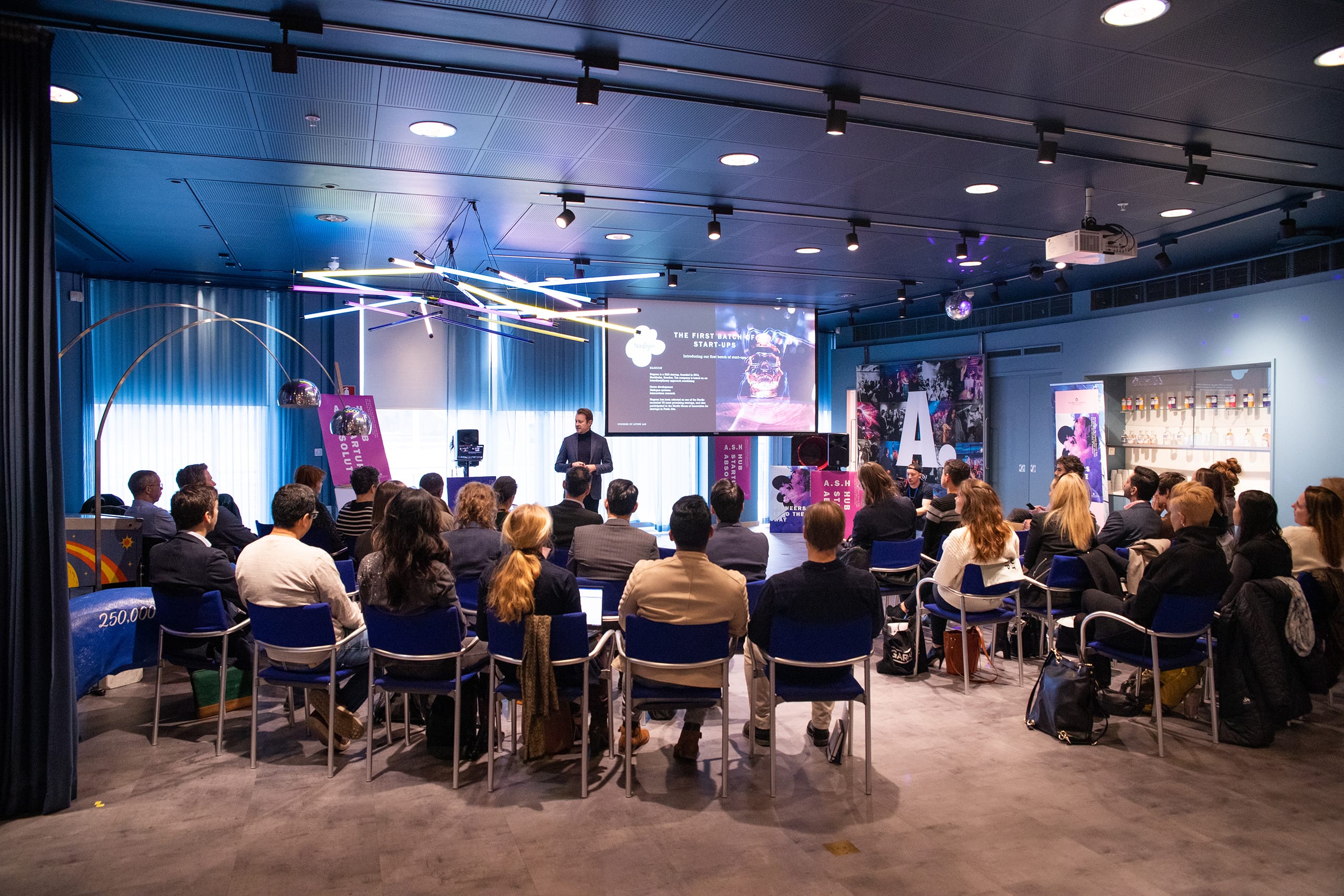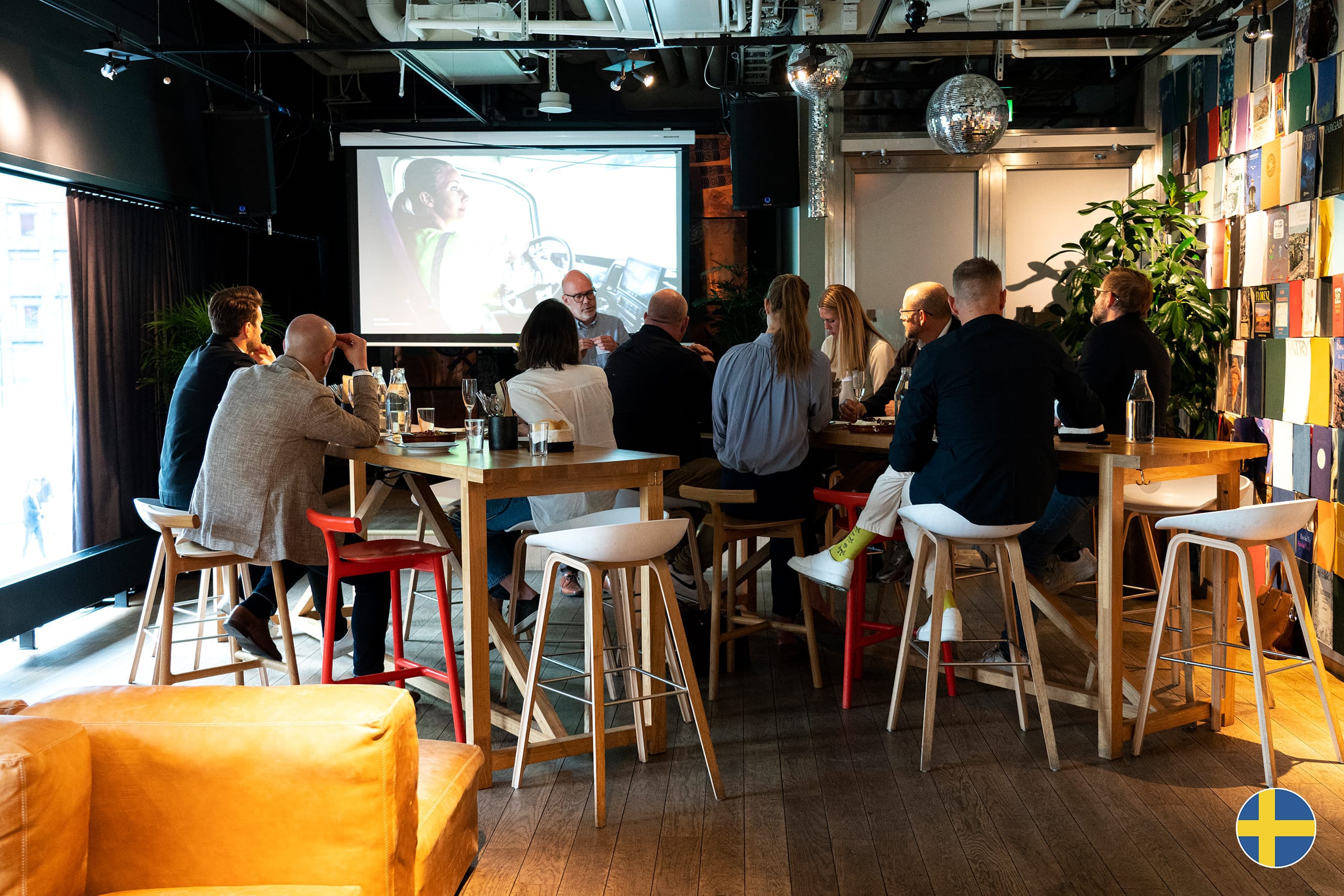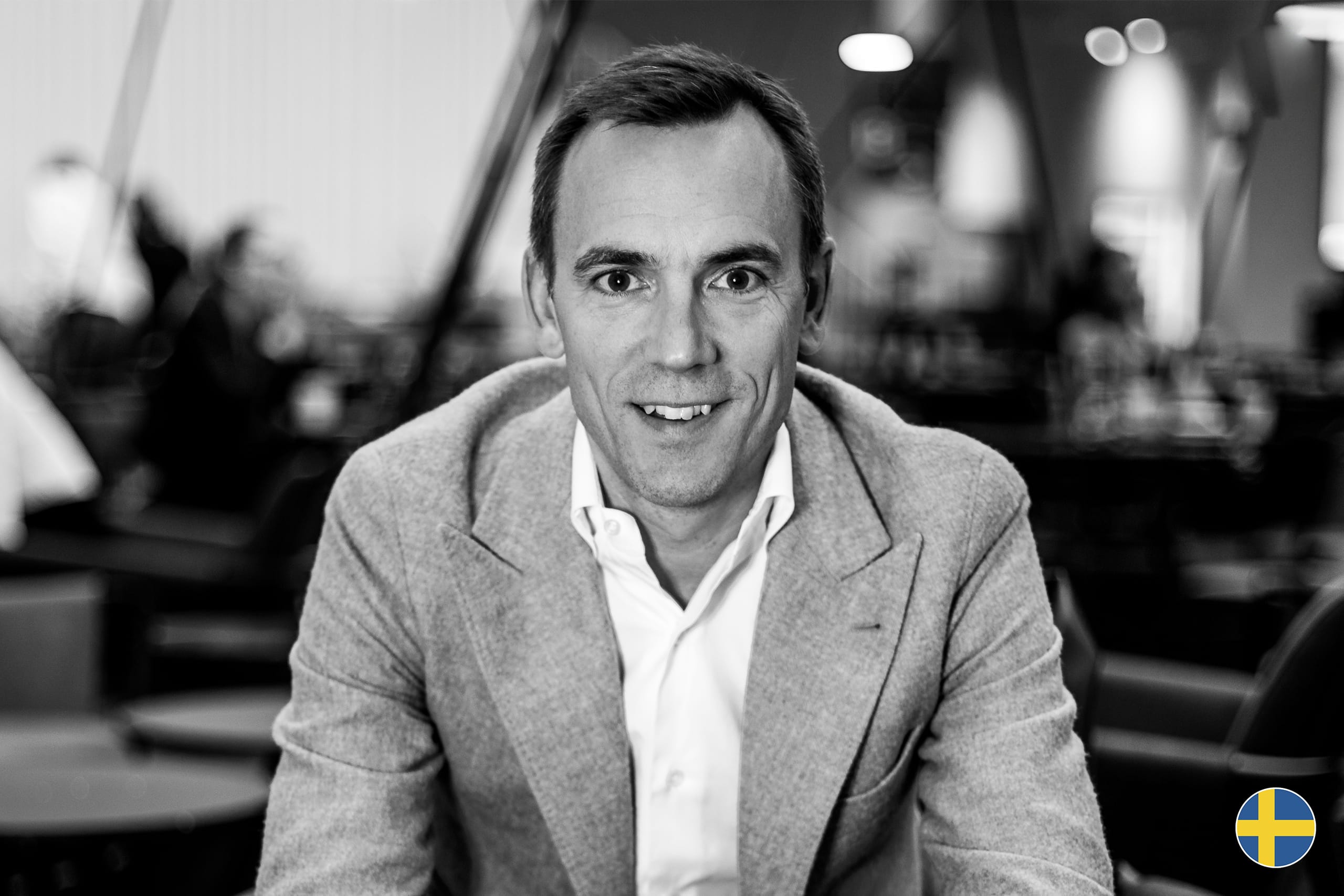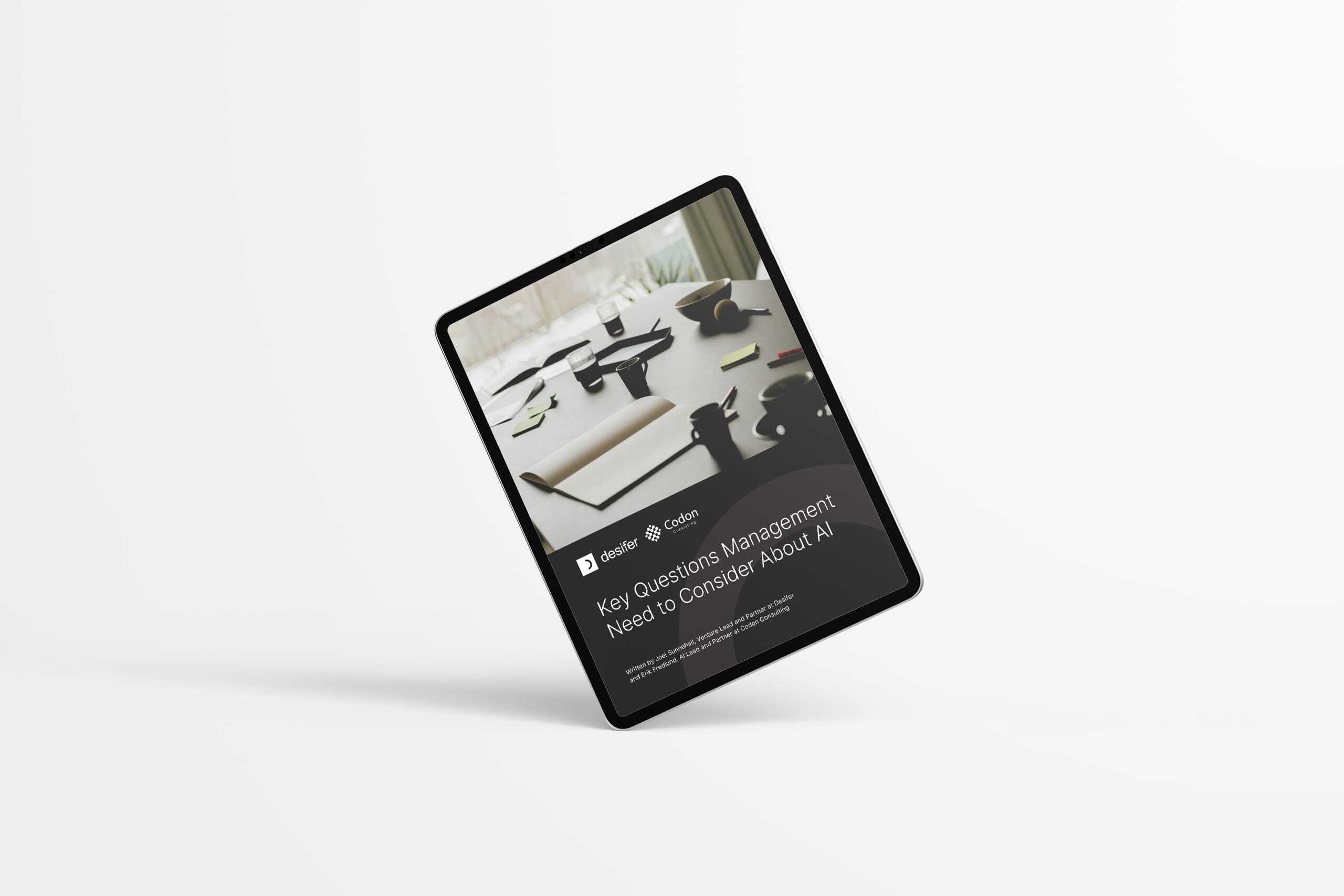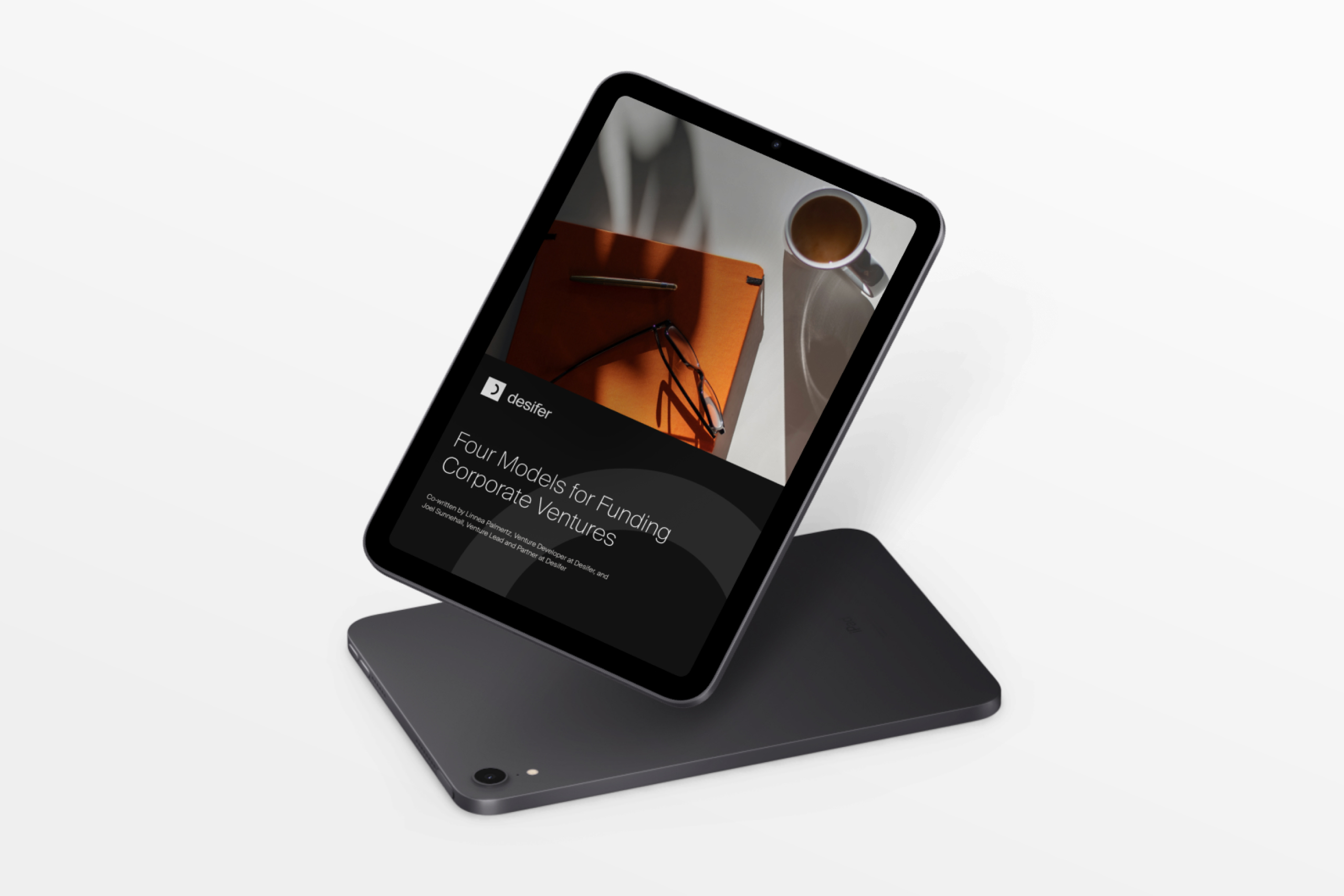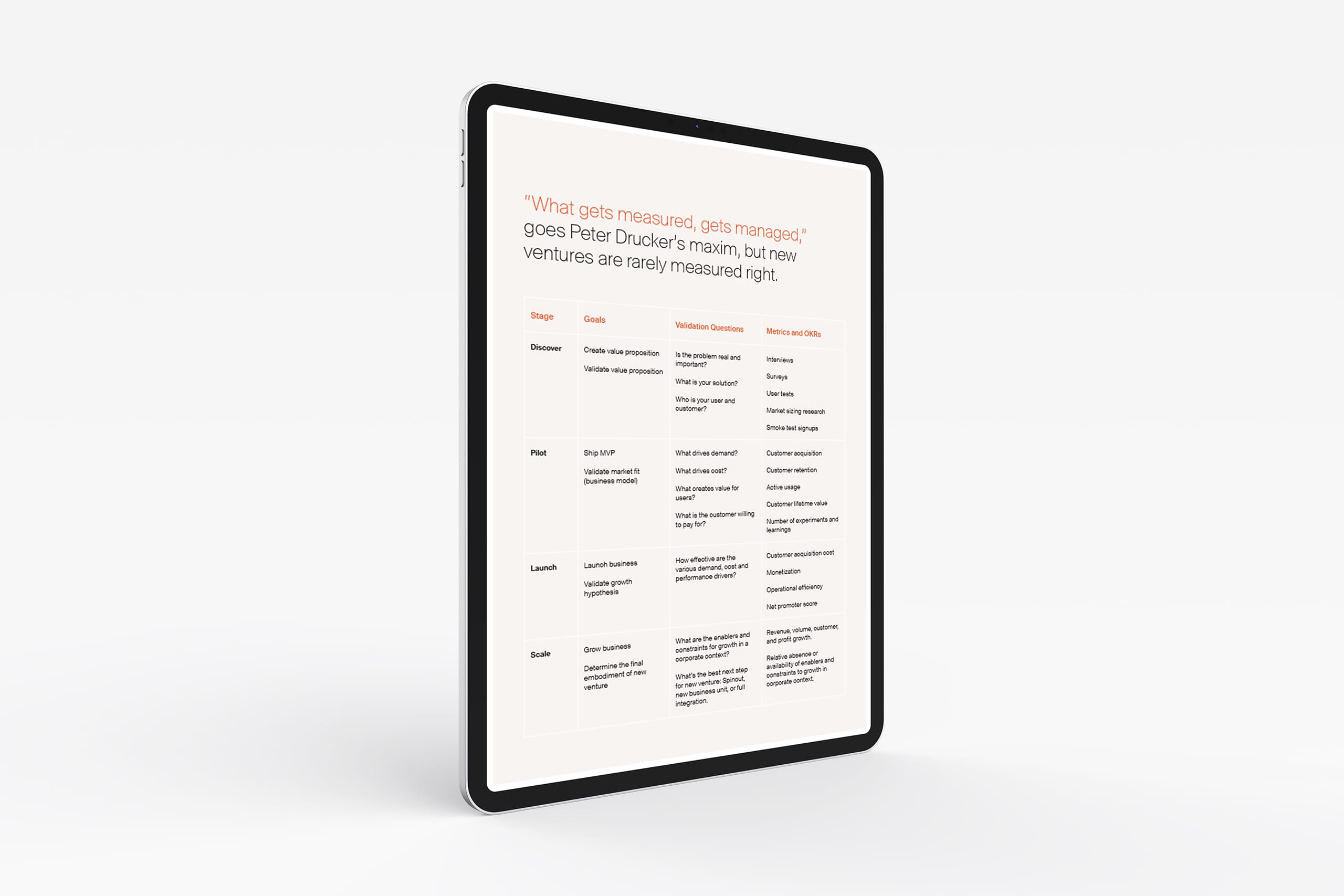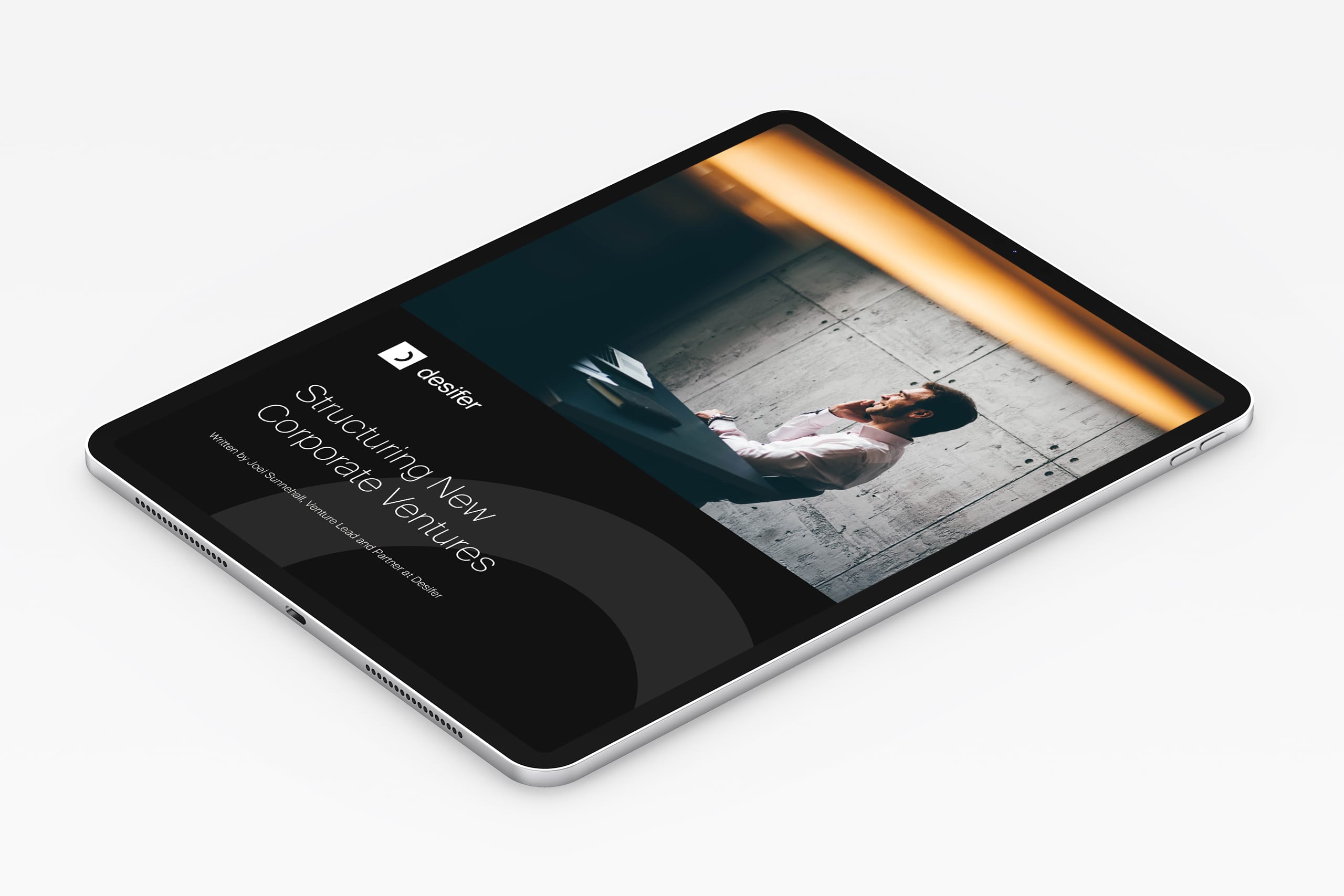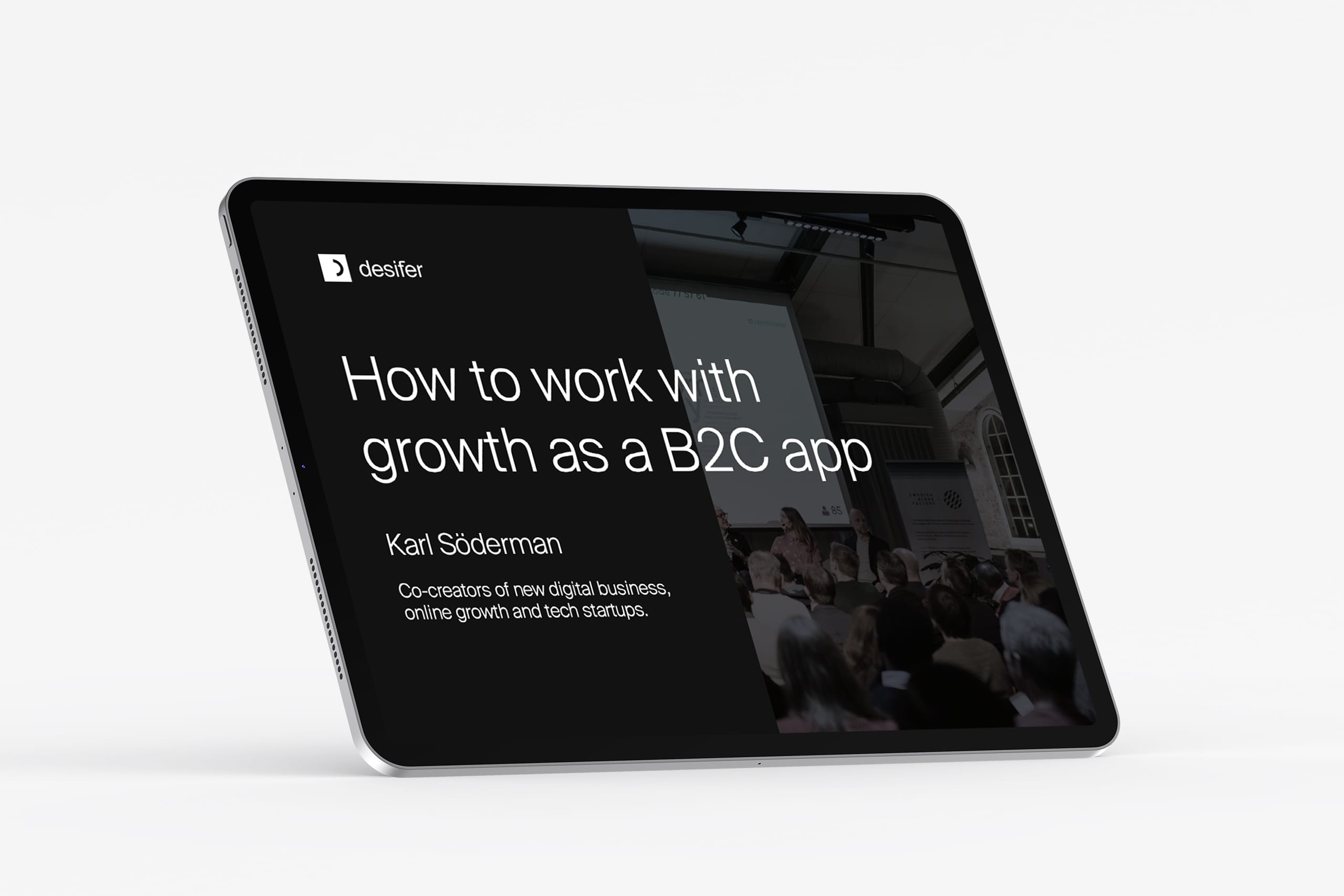Strategy | Governance
Written by Linnea Palmertz
June 13, 2022
Existing data becomes new solutions: Insights about Corporate Venturing with Volvo Group Connected Solutions Innovation Labs
Perspective, team, definite results and partnerships: that’s four things Hans Lind, Director Business Innovation and Foresight at Volvo Group, pointed out as important factors to succeed with innovation when he shared some of his insights at our most recent dinner with Desifer Venture Club.
Foresight and parallel scenarios to achieve long-term relevance
Volvo Connected Solutions Innovation Lab, which Hans is a part of, is on a mission to build the next sustainable growth funnel for Volvo Group. Their mission is to explore ideas that create value for the company and help them stay relevant in the long run; ideas that are not even on the roadmap yet. To build relevant solutions for the long run, the team is working with different potential future scenarios to identify real opportunities and defined needs, from which the team can start imagining solutions. Here, Hans highlights the importance of adopting an outside-in perspective to ensure they are solving the right problem and to reduce the risk of getting stuck in technology-driven solutions, which is a common pitfall when working with innovation.

Hans Lind, Director Business Innovation and Foresight at Volvo Group
A balanced team
How do you put together the optimal team for corporate venturing? How many should come from within the organization and how many should be external? These are questions that many struggle with. At Volvo, an organization that has some of the best engineers and business leaders in the country, there is no doubt that the right talent can be found within the organization. However, at traditional companies, there is a tendency to always think along the same lines. Hans jokingly points out that with a team of internal Volvo-thinkers, all innovative ideas are likely to materialize as yet another truck in the end. At the innovation lab, they have chosen to source around 25 percent of the team from within, and the remaining being recruited externally.
However, the balance between internal and external is not the only aspect to consider when putting together an A-team for your venture studio. Embracing diversity is equally as important. This is something that Hans has worked actively and deliberately with over the past couple of years, and with great results. Today, the innovation lab at Volvo Group, which is spread across both Gothenburg and Silicon Valley, counts up to twelve different nationalities and has a rather even distribution between the genders.
Show don’t tell
The solutions that spin out of Connected Solutions Innovation Lab are typically picked up by one of the divisions in the established organization, with the exception of one innovation that was established as a new division. This means that you are dependent on the relationship with the divisions that potentially could take in the solutions, in order for them to scale and create value. Equally important is being able to sell your solutions internally, and that is something that they spend a lot of time on.
There are a few things that have helped Hans and his team to get the people on the inside on board with their ideas. First of all, have patience. Remember that it is a long road to reach the final destination. It might not always be crystal clear to spin it off as its own venture, so let the decision take time and evolve organically. Second, open their minds by showing them your new ideas. Here, you have to be factual in your arguments and demonstrate the tangible benefits that this investment would contribute to the larger organization. Show, don’t tell.
Partnership
According to Hans, one particularly important success factor for the innovation lab is that they have worked a lot with partnerships. Both academic institutions, governmental entities and startups, which has opened up for new perspectives, new ideas and competencies that otherwise would not have been accessible. For example, he mentioned Smoovit that is a venture driven in collaboration with Gothenburg city, Vinnova, and several other commercial actors.
Challenges with startup collaboration and organizational feasibility
During the common discussion that followed Hans’ presentation at Desifer Venture Club, it became clear that challenges around building a team and convincing the established organization were issues that many other participants could recognize themselves in. Two important insights from the discussion were that:
- Collaboration with startups can be an administrative nightmare: demanding that startups go through a long due diligence process is most of the time neither interesting nor possible. A tip from one participant was to use one of the independent organizations that can simplify collaborations with startups, such as Combient Foundry.
- Organizational feasibility is often far more complicated than technical feasibility. The organizational challenges remains even though the solutions that most are working with have extremely high technical complexity.









